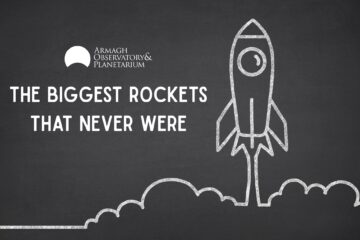Article written by: Dr. Yanina Metodieva
Have you ever wondered what is it like to live in space? How you put things down when there’s no ‘up’ or ‘down’? How do you sleep when nothing holds you to your bed? How you wash your face when the water does not behave normally? Here are some interesting facts about life in space.

The International Space Station. Four different cargo spacecraft deliver science, cargo and supplies: Orbital ATK’s Cygnus, SpaceX’s Dragon, JAXA’s HTV, and the Russian Progress. Credit: NASA/ESA
Some information about the ISS
The International Space Station, or the ISS, is the biggest human-made satellite, with dimensions of 72 by 108 by 20 metres. It is actually the second largest satellite of the Earth, the largest being the Moon, of course! The ISS has a low-Earth orbit, meaning that it is flying ~400 km, or 250 miles above the ground, at a speed of 27,600 km/h (or 17,150 mph). The ISS takes about 92.5 minutes to complete one lap around the planet, allowing the astronauts on board to see about 15 sunsets and sunrises for one Earth day.
Weightlessness, not zero gravity
The ISS provides a safe habitat for people in space. However, life there is very different than life on Earth. People in space experience something often called ‘zero gravity’. In reality, the gravity there is slightly weaker than gravity on Earth. (Here are some numbers: The gravitational acceleration g at sea level is around 9.8 m/s2. If you calculate it at height of 400km above the ground, it is only about 10% weaker). This means that the ISS is still experiencing the gravitational pull of our planet, but because it is ‘free falling’ towards Earth, the people inside are in a state of weightlessness. Weightlessness occurs when a body (in this case the ISS) is free falling, accelerating downward at the acceleration of gravity. The two forces cancel each other out, leaving the falling body not supported by any forces, and in a state of weightlessness. For example, you might have experienced weightlessness if you’ve ever been on a roller coaster or one of the ‘falling towers’ in theme parks. When they are on their way down to Earth, you might have been lifted from your seat for a brief moment. For that brief moment, you were weightless and floating above your seat just like the astronauts on the ISS.
Moving in space – more like swimming not walking
Life in ‘zero gravity’ sounds like a lot of fun, but astronauts face a lot of challenges in space. There are major changes in the way a human body works and moves in space compared to the same on Earth.
First one is, of course, moving through space. Here on Earth we are used to gravity keeping us on the ground, if you jump up in the air, you come back down. In space, astronauts move in a very different way. Moving around in weightlessness is similar to swimming on Earth. Every action in space has an equal reaction in the opposite direction, for example, if you sneeze in space, the force of your sneeze has to be balanced, so you are accelerated backwards.
If a body is in rest, it stays in the same position, so you can leave your pen in mid-air and it won’t fall to the ground. If you’re moving at a certain speed, you will keep moving and nothing will stop you (unless of course, you hit a wall).

Scott Kelly experimenting with citrus fruits onboard the ISS. Scott Kelly was famously one of two astronauts that were part of the One Year Mission on the ISS. He stayed on the ISS for one year in order to test what effects this would have on the human body. CRedit: NASA/ESA
Blood circulation in space
Another major change in the way the human body works in space is the blood circulation. This is a very important thing to understand in order to keep the astronauts healthy. When a person is standing here on Earth, their body functions in a ‘normal’ way, or the way it’s supposed to. The human cardiovascular system has adapted to work in normal gravity. The heart pumps blood around the body in two major circles, called large and small circulation. The small one goes to the brain, lungs and the arms, and the large one – to the tummy and legs. On Earth, the gravity helps the large circulation to bring blood all the way down to your toes, but in space, this force is cancelled out, and the blood flow to your tummy and legs is significantly lower. Because the blood in the body is redistributed, astronauts experience ‘puffy face’ and ‘bird leg syndrome’.
Exercises in space
That is why astronauts on board the ISS have to spend a lot of time exercising in order to keep their bones and muscles healthy. Special exercise machines are designed to go on board the ISS, and astronauts spend on average 2 hours per day exercising in order to prevent muscle and bone mass. In weightlessness people need special straps to keep them not flying away from the exercise equipment, for example, you have to run tied to the machine, otherwise, you’ll just fly away.

This is how astronauts work out on the ISS – tied down so they don’t fly away. Here we can see Astronaut Luca Parmitano getting his daily exercise. Credit: NASA.
Growing a few cm while in space.
When in space, many people are reported to grow a few centimetres. Because the Earth’s gravity is not keeping you down, the spine discs decompress and make you slightly taller. Astronauts often return to Earth a bit taller than before they left – the spine compresses again shortly after they return back to normal gravity.
Food and drink on the ISS
What do you think people in space eat? The ISS is not like here on Earth, where you can find a shop very close to you and get fresh food every day. On board the ISS people have their food delivered from Earth with shuttle missions. The food comes in bags and tins, and most of it has been dehydrated to make it lighter. Water is injected in the bag and dinner is served 🙂
And where does the water come from? It is very expensive to bring water from Earth, so on board the ISS, every drop of water is recycled. Every exhaled breath, every drop of sweat, shower water and urine, is recycled back to drinkable water.
Water in space is not flowing like water here on Earth. It stays in a bubble in mid-air. So in order to drink some water, or wash your face, you have to adapt. Here are some links to videos from the ISS on daily challenges like that.
Sandwiches in space: https://www.youtube.com/watch?v=Z2szk-NuKWg
Washing your hair in space: https://www.youtube.com/watch?v=kOIj7AgonHM
Washcloths in space: https://www.youtube.com/watch?v=KFPvdNbftOY
There is no up and down, narrow doorways
In space, there is no ‘up’ and ‘down’, so the doorways and corridors don’t need to be big enough to fit a person standing up. When you’re floating through space, however, you don’t need floor space, which means you can use the ‘floor’ and ‘ceiling’ space as shelving/cupboards.
How do they sleep?
Sleeping in space is very different than sleeping on Earth. Here on Earth, you lie down in your bed and gravity keeps you there during the night. In space, nothing keeps you down, simply because there is no down. So all astronauts sleep in sleeping bags and have to strap themselves to the walls so they don’t float away in their sleep and bump into something.
Bad hair day definition
On Earth, your hair is kept down by gravity. In weightlessness, nothing keeps it down and it flies around. So this gives us ladies (and some gentlemen) a new definition of a ‘bad hair day’. In space, you need to keep your hair tied up 🙂
Using a pen in zero gravity
One common issue for people in space was using a pen. Pens on Earth write because gravity helps push the ink down in the filler. The solution to this problem was to use pencils but soon people discovered that the pencil chippings actually fly away and pollute the space station. So a new type of pen was developed that works in weightlessness.
Common issues when you return back to Earth.
Common issues astronauts report is leaving things in mid-air. Because of the weightlessness in space, astronauts get used to leaving objects like pens, pencils, plates, food, even water, in mid-air, and of course when back on Earth, all of these fall to the ground.
Views from the ISS – aurora and storms, fireworks etc.
People on board the ISS have an amazing view. Through the windows there, you can see the Earth, passing above the continents, or big storms, or even areas with Aurora. Here are some lovely views from the ISS.





0 Comments